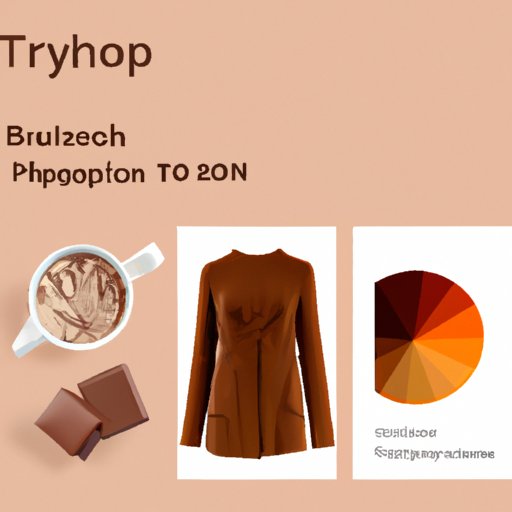
Introduction:
Have you ever wondered how to make the color brown? Perhaps you’re a budding artist or designer, or maybe you just want to add some brown accents to your home decor. Regardless, knowing how to create brown can be incredibly useful. In this article, we’ll explore several different methods for making brown, including mixing primary colors, using complementary colors, experimenting with shades, and utilizing natural sources. We’ll also dive into the psychology of the color brown and how it can be incorporated into fashion and design.
Mixing Primary Colors:
The most basic way to make brown is by mixing primary colors. By mixing equal parts of red, yellow, and blue, you can achieve a muddy brown hue. However, there are different proportions you can use to achieve different shades of brown. For example, using more red and blue than yellow will create a cooler, darker brown. Adding more yellow to the mix will result in a warmer, lighter brown. It’s essential to experiment and find the right proportion for the desired color.
Using Complementary Colors:
Another method for making brown involves using complementary colors, which are colors opposite each other on the color wheel. Mixing two complementary colors creates a brownish tone. For example, red and green are complementary colors, so mixing them together can create a brownish shade. Different complementary palettes can be used to create unique and interesting shades of brown. However, it’s crucial to balance the proportions of the two colors to achieve the desired effect.
Experimenting with Shades:
When it comes to creating different shades of brown, experimentation is key. Mixing different amounts of each color will result in different tones of brown. For example, adding more blue to the mix can create a cooler, darker brown, while adding more yellow can create a warmer, lighter brown. It’s essential to experiment and find the right proportion for the desired effect. Furthermore, unique tones can be achieved through experimentation, making each mixture distinct.
Natural Sources:
Natural sources can also be used to create brown. For example, mixing clay can create a variety of shades of brown. Spices like cinnamon or nutmeg can also be used to achieve unique shades of brown. Natural sources are perfect for creating a more organic and authentic feel to the color. Furthermore, by using natural sources, you can achieve a wide range of browns that can’t be replicated with artificial colors.
Color Psychology:
Understanding the psychology of the color brown can help you use it in a more effective and purposeful way. Brown is often associated with warmth, stability, and reliability, making it perfect for creating a calming environment. In interior design, brown can be used to create a cozy, inviting space. It’s a versatile color that works well in many contexts, from rustic and traditional to modern and sleek.
Brown in Fashion:
Brown has been gaining popularity in recent fashion trends. It’s a classic and timeless color that adds elegance and sophistication to any outfit. Brown can be paired with different colors and patterns, making it versatile. It’s perfect for creating a neutral base that can be built upon with other colors and styles. Mixing different shades of brown can add depth and interest to any outfit.
Conclusion:
In conclusion, knowing how to make brown can be incredibly useful in many contexts, from art and design to fashion and interior decoration. There are several different methods for creating brown, including mixing primary colors, using complementary colors, experimenting with shades, and utilizing natural sources. By experimenting with these techniques and understanding the psychology of the color brown, you can effectively incorporate brown into your projects. So have fun and experiment with creating your unique shade of brown.




